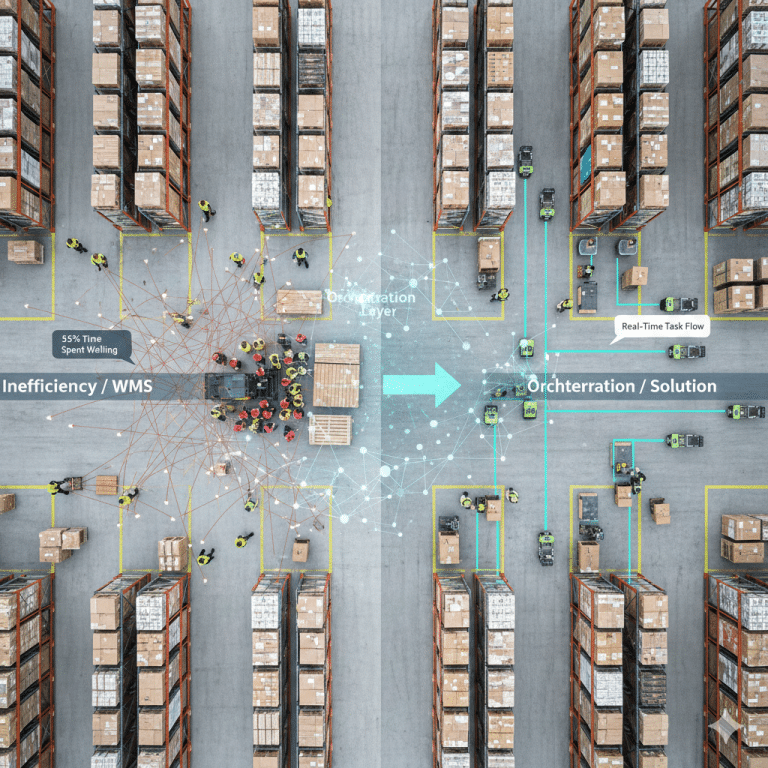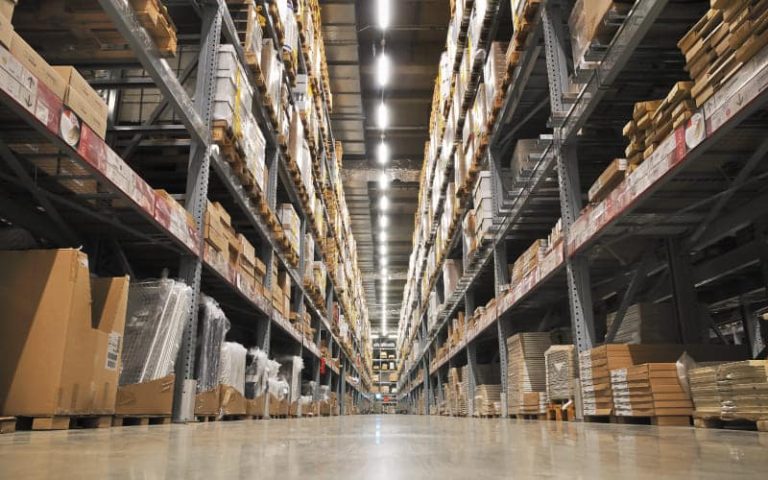A warehouse decommission is about much more than shutting down an operation or moving to a new location. You need to get the most value out of your material handling equipment for sale. This requires your equipment to be decommissioned safely and correctly.
It takes careful planning and expertise to manage a warehouse strip out efficiently and it can turn into a challenging experience. Thankfully, you have the option of working with seasoned liquidators and warehouse decommissioning experts who will help streamline the entire decommissioning process for you and make sure you get top dollar for your used equipment. This article will explain the decommissioning process, as well as key factors to consider when partnering with a team to ensure maximum efficiency.
Some of the things to look for in a warehouse decommissioning company are:
- Detailed warehouse decommissioning project planning
- Safe equipment disassembly and warehouse strip out
- Asset management and fair market pricing for used equipment
- Regulatory compliance with applicable federal, state, and local regulations
- Disposal and recycling of materials
- Site close out and clean up
Because of the volume of projects we’ve handled, we wanted to share our expertise in managing decommissioning effectively to minimize the time it takes and maximize your return. We have learned a few things along the way. This guide details how to do a warehouse decommission, along with some expert tips to streamline the process.
So, let’s get started. What are the steps in the decommissioning process? It begins with developing a project plan.
Developing the Decommissioning Project Plan
The first step in the decommissioning process is to put together your team that will oversee the project and develop your decommissioning project plan.
Create a Cross-Functional Team
It helps to create a cross-functional team with representatives from all impacted areas, including operations, human resources, facility management, logistics, and finance. This collaboration helps identify potential challenges earlier in the process and keep everyone on the same page.
Outline Your Plan
Your decommission project plan needs to outline your goals, timelines, and milestones. Depending on your goals, your plan can vary greatly. You will take a different approach if you are shutting down and liquidating your assets, moving to a new location, or doing a warehouse strip out and starting on a rebuild.
The planning process is essential and can get complicated. Partnering with professional decommissioning experts can ensure a smooth warehouse decommission. Working with experts, you can significantly reduce the time it takes to plan and execute your project.
Communicate With Stakeholders
Your plan should also address how and when you will communicate with those impacted, including:
- Customers
- Suppliers
- Employees
- Owners and landlords
- Investors
- Local authorities
You need to keep everyone up-to-date with what’s happening and provide enough time for adjustment.
In many cases, this means talking to your employees about their jobs post-decommissioning, meaning layoffs, transfers, or temporary work stoppages. You will want to get some advice from your legal counsel to ensure compliance with labor laws in your state. Large warehouse operations that employ 100 or more workers are subjected to federal requirements under the Worker Adjustment and Retraining Notification (WARN) Act, which mandates notification of closings or mass layoffs at least 60 days in advance.
Depending on the scope of what you are doing, you may need CAD drawings or permits. The Conesco Storage Systems team can help with both.
Do a Thorough Inventory and Asset Analysis
You will want to do a comprehensive inventory of your warehouse assets. This includes detailing equipment, age, and condition. There is a huge market for used warehouse equipment and the more details you provide, the better. Pictures, manufacturer, model numbers, operational hours, and maintenance records can all help bolster your pricing.
You will want to sort your list to determine which assets can be sold to recoup your costs and equipment that no longer has value. To avoid disposal costs, you should consider donating assets that still have useful life or recycling.
Conesco Storage Systems has an experienced team of professionals that can help you with this process. We offer a turnkey decommissioning process that handles everything from start to finish, including dismantling warehouse racking and other equipment, buying your warehouse equipment, and disposing of assets that are not sellable. We have a commitment to sustainable practices, so we work hard to create as little waste as possible that is headed to landfills.
Identify Any Environmental Concerns
As part of your inventory, you will want to pay special attention to any hazardous materials that require special handling. In some cases, this may require specialized contractors or clearance from environmental agencies — especially if you have any concerns about site contamination. For example, if you store fuel on-site or have underground storage tanks, you may be required to do soil or groundwater testing and remediation.
Create Your Budget
You will need to create a budget for the work, including potential costs for labor, equipment or tool rental, transportation, disposal fees, and any permits or licenses. For example, you might need additional lifts for safely dismantling warehouse racking or cranes and flatbeds to transport your equipment once it is disassembled.
Executing the Decommissioning Process
With your prep work done, it is time to start the warehouse strip out process. This also takes careful planning and scheduling, especially if you plan to continue some operations while the warehouse decommission process is taking place. You will need a logical plan of attack, creating safety zones for dismantling, and staging areas for equipment and packing.
Dismantling Warehouse Racking and Other Warehouse Equipment
You can do a lot of damage during a warehouse strip out if you are not careful. We have seen a lot of valuable equipment damaged by well-meaning employees or laborers who failed to use the right tools or lacked the experience to do the job right. Unfortunately, that significantly decreased the value of the used equipment, lowering the amount of money the warehouse operators could recover from selling.
Working with heavy equipment requires safety, and improper procedures can lead to workplace injuries.
Selling Your Pallet Racking and Warehouse Equipment
When selling massive amounts of equipment, you’ll want to work with a team that has extensive warehouse liquidation experience. Look for a company that buys and sells massive amounts of equipment and can provide you with a quote for your assets. For example, at Conesco Storage Systems, we are always looking to purchase material handling equipment such as:
- Pallet racking
- Pick modules
- Mezzanines
- Push-back racking
- Conveyor systems
- Flexible conveyor units
- Carton flow
- Forklift and pallet jacks
- Cantilever racking
- Balers
- Shrink wraps
- Industrial scales
- And more
In fact, just about anything with useful life can be of value. Our customers have pressing needs for quality used equipment, which allows us to leverage their needs with your supply and get you the best possible return. If you are looking to sell your warehouse equipment for maximum value, reach out to our team to discuss your warehouse decommissioning project.
Obsolete or damaged equipment may also be sold as scrap in many cases.
Shut Down and Hand Over
Once the decommissioning process is complete, the final step is preparing the facility for closure or turning it over to landlords, owners, or new tenants. Depending on the terms of your lease or agreement, additional repairs or modifications may be necessary.
For example, if you constructed offices or staging areas, your lease may require you to tear them down and return the property to its original configuration. In other cases, you may just need to provide a broom-swept and generally clean environment.
Typically, you will want to pay attention to flooring to avoid safety hazards. Dismantling warehouse racking that is bolted to the floor may shearing off floor bolts and leveling out floors.
Final Steps
If you own the facility or have an ongoing liability, it is a good idea to review site security. Empty facilities are vulnerable to vandalism and theft, so you will want to take the necessary precautions to restrict site access as much as possible.
You will also want to:
- Conduct a final site inspection and get any necessary approvals
- Prepare and submit any documentation that is required
- Develop a maintenance plan for the decommissioned site if necessary
Warehouse Decommissioning and Liquidation Services
The process itself is fairly straightforward, but there are a lot of moving parts. Tearing everything down safely, ensuring a damage-free warehouse strip out, and maximizing the amount of money you can get from reselling require careful planning and execution.
Look for decommission project plan services that include the following:
On-site management for warehouse decommission
- Providing the labor for equipment dismantling
- Facility transfers and moves
- Buying used equipment at fair market value
- Comprehensive warehouse liquidation services
- Demolition and disposal of assets
- Inspection and repair of warehouse lighting, floors, doors, and offices
Getting Started With Conesco Storage Systems for Warehouse Decommissioning
At Conesco Storage Systems, we make it simple to get started. The first step is to give us a call or fill out a form so we can schedule a free consultation. We can talk through your plans and answer your questions to figure out your unique needs.
Depending on the size of your operation and the volume of your equipment, an on-site visit may be justified. In other cases, sending equipment lists and photos may suffice. After our review, we will provide you with a detailed proposal in just a few days. Then, we will execute the plan to meet your timelines.
Frequently Asked Questions — FAQs
What is the decommissioning meaning in construction?
Decommissioning in the construction industry refers to the process of safely and efficiently removing, dismantling, and disposing of structures, equipment, or facilities that have reached the end of their useful life or are no longer needed.
What is the purpose of decommissioning?
The primary purpose of decommissioning is to return the site or facility to a safe and environmentally acceptable condition. It aims to eliminate potential hazards, mitigate environmental impacts, and prepare the area for future use or redevelopment. Decommissioning also helps recover valuable materials and equipment that can be reused, recycled, or sold, providing economic benefits and promoting sustainability.
What is the process of decommissioning?
The decommissioning process typically involves several key steps:
- Planning and developing a comprehensive project plan
- Creating a cross-functional team
- Conducting inventory and asset assessment
- Identifying and addressing environmental concerns
- Executing the dismantling and removal of structures and equipment
- Selling equipment
- Disposal of remaining assets
- Preparing the site for handover
How long does the warehouse decommissioning process take?
The time it takes for tear down and clear out will vary depending on the size of the project. Smaller projects may be completed in a day or two. Larger projects can take much longer. Talk to one of our team members to get a better idea of the timeframe.
Minimize operational impact. Get top dollars for your equipment. Maximize the value of your investment. Contact Conesco Storage Systems at (303) 690-9591 or by requesting a consultation to discuss your warehouse decommission project.



